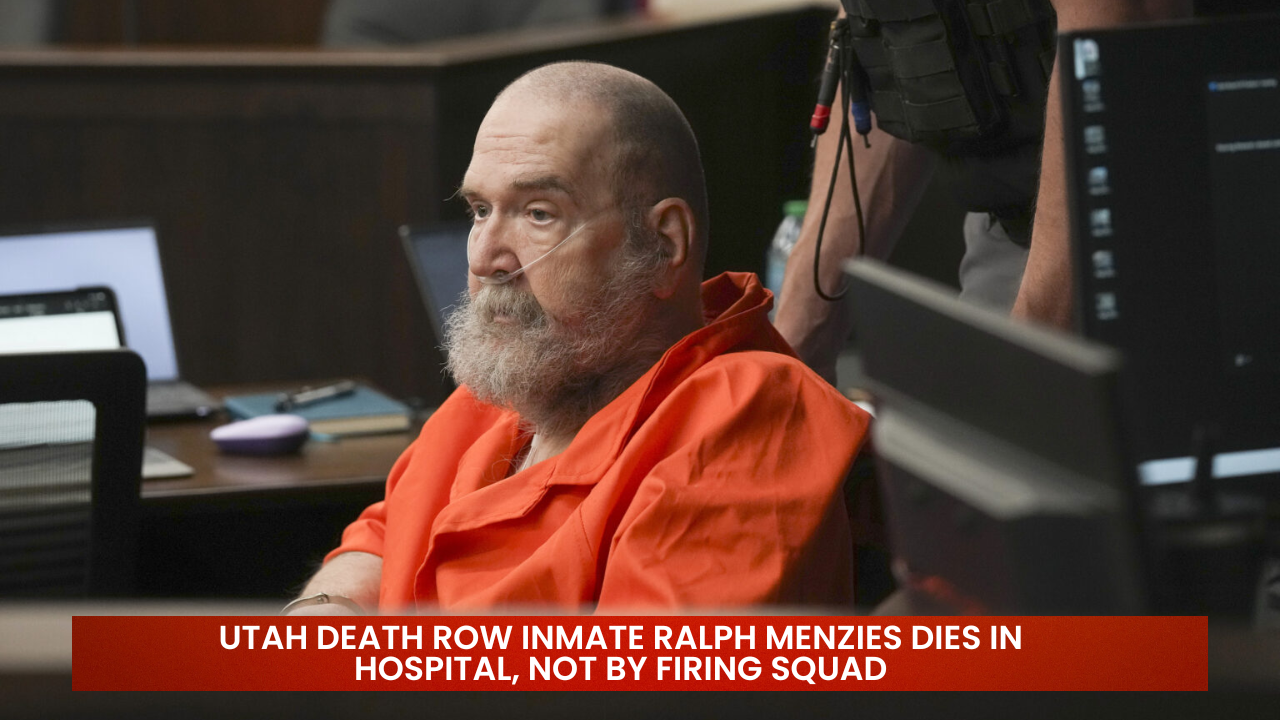SALT LAKE CITY, Utah – One of Utah’s longest-running death penalty cases has ended not in an execution chamber, but in a hospital room. Ralph Menzies, who spent more than three decades on death row for the 1986 murder of Maurine Hunsaker, died Wednesday of presumed natural causes at age 67.
According to the Utah Department of Corrections, Menzies passed away at 1:45 p.m. at a local hospital. He had been incarcerated since the late 1980s and was among the state’s most well-known condemned inmates.
Dementia, Competency And A Paused Execution
In the final years of his life, the legal battle centered on whether Menzies was mentally competent to be executed. He had been diagnosed with vascular dementia, a condition caused by reduced blood flow in the brain that can lead to memory loss and cognitive decline.
Under rulings by the Supreme Court of the United States, a person cannot be executed if they are unable to rationally understand the reason for their punishment. The question of whether Menzies still grasped why the state planned to execute him ultimately led to his Sept. 5 execution date being indefinitely postponed earlier this year.
His lawyers argued that his dementia had worsened to the point that he no longer fully comprehended his situation, raising serious constitutional concerns about moving forward with the firing squad he had chosen as his method of execution.
Victim’s Son: “It’s Over. It’s Over.”
For the family of Maurine Hunsaker, news of Menzies’ death stirred a complicated mix of emotions.
Her son, Matt Hunsaker, was just 10 years old when his mother was killed. Prosecutors said Menzies kidnapped the 26-year-old from the gas station where she worked in Kearns, drove her to Big Cottonwood Canyon, tied her to a tree, strangled her and slit her throat. Her body was found days later by a hiker.
When Menzies’ execution was put on hold, Hunsaker said he was devastated that he would not see the sentence carried out. But on Wednesday, speaking from a family vacation in Florida, his feelings had shifted.
He described himself as both numb and grateful – numb at the sudden news, and grateful that his family would not have to endure another agonizing countdown to an execution during the holidays.
“It’s over. It’s over,” he said, adding that he is also praying for Menzies’ family as they grieve.
“I just hope she’s proud of me. I hope she’s proud of our fight to the end,” he said of his mother.
Hunsaker acknowledged that, in his view, his family did not receive full justice, but he also said Menzies’ death brought a measure of closure after nearly 40 years of court hearings, appeals and delays.
A Case That Defined Utah’s Death Row
Menzies’ case stood out in Utah’s modern death penalty history. Over the decades, it raised difficult questions about:
- How long capital cases should remain active
- What level of mental awareness is required for execution
- How victims’ families navigate decades of appeals and uncertainty
By the time of his death, Menzies had become a symbol of both the length and complexity of capital punishment litigation. His choice of the firing squad – a method still on the books in Utah under certain conditions – drew national attention each time an execution date was set.
Ultimately, it was not the state but natural causes that ended his life.
For the Hunsaker family, the legal chapter is now closed, even if the loss that began in 1986 can never truly be repaired. For Utah, the case leaves a lasting imprint on ongoing debates about the future of the death penalty, mental competency and the meaning of justice for victims and their families.



